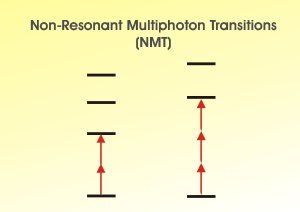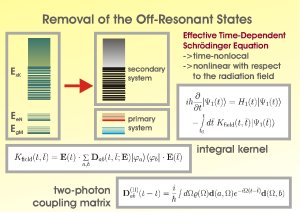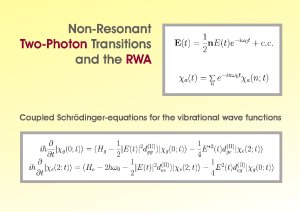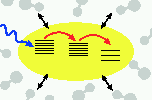Nonresonant Multiphoton Transitions in Polyatomic Molecules
A systematic approach has been developed to describe non-resonant multiphoton
transitions, i.e. transitions between two electronic states without
the presence of additional intermediate states resonant with the
single photon energy. The method is well suited to
describe femtosecond spectroscopic experiments and, in particular,
attempts to achieve laser pulse control of molecular dynamics. The
obtained effective time-dependent Schr"odinger equation includes
effective couplings to the radiation field which combine powers of
the field strength and effective transition dipole operators between
the initial and final states. To arrive at time-local equations our
derivation combines the well-known rotating wave approximation with
the approximation of slowly varying amplitudes. Under these terms,
the optimal control formalism can be readily extended to also
account for non-resonant multiphoton events. Exemplary,
non-resonant two and three-photon processes, similar to those
occurring in the recent femtosecond pulse-shaping experiments on
CpMn(CO)_3, are treated, using related ab initio potential
energy surfaces.
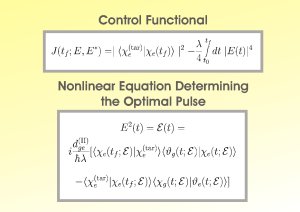 |
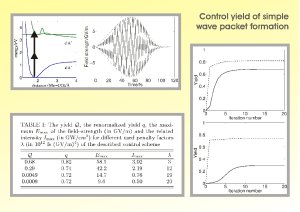 |
Some selected publications:
D. Ambrosek, M. Oppel, L. Gonzales, and V. May:
Application of the Optimal Control Theory to Ultrafast Non-Resonant
Multiphoton Transitions in Polyatomic Molecules
Opt. Comm. 264, 502 (2006).
V. May, D. Ambrosek, M. Oppel, and L. Gonzales:
Ultrafast Non-Resonant Multiphoton Transitions in Polyatomic Molecules:
Basics and Application in Optimal Control Theory
J. Chem. Phys. (submitted).
